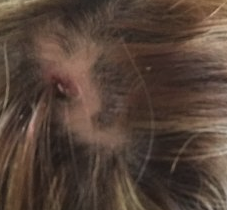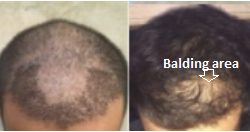With swelling in the donor area after 4 weeks, I would worry about an infection. I suggest that you see a doctor who understands the FUE that you had done. If going back to Turkey is not an option, see a local hair transplant doctor.
Good question. There is no evidence that men who were on Finasteride have impacted their male babies. We know that Finasteride does not cross into the fertilized egg, so that alone suggests that there is no relationship to cause a smaller penis.
The best thing you can do is to get a HAIRCHECK test of your scalp which will document all of the hair loss that you can’t see. With this test, you can establish a metric which will allow you to make decisions, such as the use of medications if you are indeed balding. If you start taking medications, you can track your results over a year when you repeat the HAIRCHECK test again.
See here for a good example of this process with photos: https://baldingblog.com/2017/01/10/value-haircheck-bulk-measurements-two-patients-seen-today/
Most likely about to start meds; would appreciate advice from tressless
Hair loss following a hairline lowering procedure, like any facial plastic surgery is a known risk. Many times, in men who get a hairline advancement surgery, it does not come back. If you lost hair at the advancement edge, the scar will have to be covered with a hair transplant. Usually women lose hair in the corners of their hairline and this is almost always permanent so a hair transplant will also address this as well. Hair loss elsewhere may reflect a dermatologic problem which should be diagnosed if you have one. The diseases such as FFA, LLP and other types of scarring alopecias need to be ruled out in the evaluation of your problem
https://www.cassiopea.com/~/media/Files/C/Cassiopea/documents/20171211_Cassiopea_Press%20Release_Completion%20Breezula%20enrolment_EN.pdf
You most likely have traction alopecia, the result of pulling on your hair when you were young. These pulled out hairs are connon in the AfroAmerican community and they exist on the sides of your temples and it can be addressed nicely with hair transplants
Hair loss after a strip surgery does happen and it often reverses over a period of time of up to 6 months. If it does not, the best treatment for it is either a scar revision or scalp micropigmentation (see here: https://scalpmicropigmentation.com/scar-covering/)
Dr. Robert Bernstein and I coined the name Follicular Unit Extraction in the first published article in the field of FUE in 2002, but because of problems in the way the term has been seen and used in the marketplace, the International Society for Hair Restoration Surgeons asked us if we would agree to a change in name to Follicular Unit Excision. Dr. Bernstein wrote a good explanation as to why we agreed to that name change. Here is his post on his website: https://www.bernsteinmedical.com/news/new-nomenclature-for-fue/
With this detailed description of the use of PRP, nowhere in the document is the use of PRP recommended for hair growth. That is interesting considering that PRP is being offered in hair clinics across the world.
Uneven hairlines in men usually indicate that recession from genetic balding has started. Showing up on only one side is not uncommon but eventually it will impact the other side and more recession of the entire hairline is very probable. See a doctor who can make the correct diagnosis. If you are over 25, you can transplant it to correct the uneven appearance but you should also take the drug finasteride to stop the progression of the balding process.
I am not impressed with the dermaroller. If you have hair loss, treat it properly with minoxidil and/or finasteride for a male and you know you are giving it your best shot
Burried grafts from poor techniques often cause these bumps which most likely reflect burried grafts. If they get infected, they probably should be drained. Go back and see your doctor



